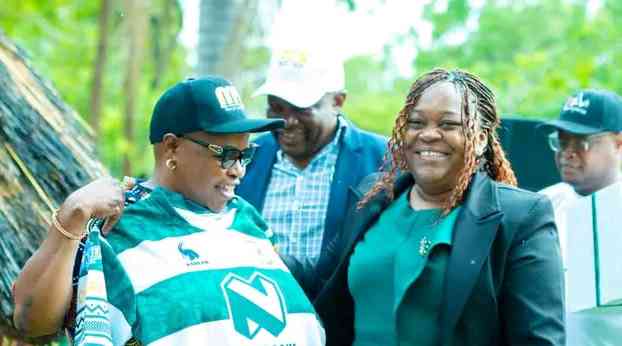BY DR YVETTE ALT MILLER
President Abraham Lincoln maintained the Union and freed America’s slaves. Less known is that he also championed the rights of Jewish Americans, even when it was difficult and unfashionable to do so.
Here are some snapshots of Lincoln’s remarkable relationship with Jews and examples of Lincoln’s support for full rights for his fellow Jewish citizens.
- Biblical education
Lincoln has been called America’s most biblically literate president. He regularly quoted from the Bible in letters, speeches and ordinary conversation. Unlike many American Christians of his time, Lincoln eschewed the habit of focusing primarily on the Christian parts of his Bible, and seemed remarkably comfortable with the Torah (the so-called “Old Testament”).
According to historian Jonathan Sarna, Lincoln quoted from the Old Testament much more often than from the New Testament. In his surviving letters, Lincoln mentions God over 420 times, yet remarkably never refers directly to Jesus.
One example of Lincoln’s familiarity with the Jewish Bible can be seen in his June 29, 1863 letter to General Robert Milroy. Reprimanding the general for his disobedience, Lincoln referenced the Jewish story of Moses, who sinned by losing his temper and struck a rock. “This, my dear general, is I fear, the rock on which you have split”, Lincoln chided the general, vividly drawing on this famous Jewish story.
- First Jewish friend
Unlike many 19th Century American Christians, Abraham Lincoln considered many Jews his friends. The first Jew whom Lincoln might have befriended was Julius Hammerslough, a young store owner in the Illinois state capitol of Springfield. When Lincoln was elected to the Illinois State Legislature in 1834, he met Hammerslough and took the unusual step of socialising with the young merchant.
By all accounts, Hammerslough was a proud Jew. As a young man he’d served as secretary of Baltimore’s Hebrew Assistance Society. In 1865, when his new home town of Springfield built its first synagogue, Hammerslough served as its president. At a time when Jews were viewed with suspicion, Lincoln treated Hammerslough as an equal. Once Lincoln became president, Hammerslough was a frequent guest at the White House. Hammerslough died in 1908; his obituary in the New York Times described him as a “warm friend of Abraham Lincoln”.
- Jewish best friend
One of Lincoln’s closest friends was Abraham Jonas, a Kentucky merchant, lawyer and politician who supported and encouraged Lincoln for most of his life. Jonas was one of the very first public figures to encourage Lincoln to run for president; he was also the only person Lincoln ever referred to as “one of my most valued friends”.
Born into an Orthodox Jewish family in England, Jonas moved to Cincinnati with his brother as a teenager in 1819. The pair established Ohio’s first synagogue. Jonas later served in the Kentucky House of Representatives, and eventually settled in Quincy, Illinois, where he became a lawyer and politician. There, Jonas’ religion was plain to all: his law office was in the same building as Quincy’s Congregation B’nai Abraham synagogue, which Jonas and his brothers had helped establish.
Congress’ passage of the 1854 Kansas-Nebraska Act, allowing the westward expansion of slavery into new states, horrified both Jonas and Lincoln; both spoke out against the measure and against slavery. It was Abraham Jonas who first invited Lincoln to debate Sen. Stephen A. Douglas, who supported the Act, in what would become the famous Lincoln-Douglas Debates, some of the most seminal American political speeches ever made, concerning slavery and the nature of the American union.
When the Civil War broke out, both Lincoln’s and Jonas’ own families found themselves on both sides of the divide: two of Abraham Jonas’ five sons fought for the Confederacy. When his neighbours in Quincy demanded that Jonas resign his position as the city’s postmaster because he had sons fighting Illinois, Jonas issued an anguished response:
If it be true, as they say, that two of my sons are in the rebel army, however grieved I may be at the knowledge thereof, all true men who know me will sympathize with me and admit that I have no control in the matter. My five boys were in the South many years before the rebellion, and when last heard from were all loyal to the Union. That two of them, like hundreds of other loyal men, should have been compelled to join the rebel army I am not prepared to deny, since I have not received a line from any of one of them since the commencement of this unhappy war.
Jonas’ son Charles was captured and sent to a Union prisoner of war camp in Ohio. Abraham Jonas’ health began to deteriorate, and in 1864, as Jonas lay on his deathbed, his daughter Annie sent word to Lincoln that his old friend wasn’t long for the world, and asked that Charles be released so he could visit his father once more before he died. Lincoln at once penned a note to Charles’ jailers: “Allow Charles H Jonas, now of prisoner of war at Johnson’s Island, a parol(e) of three weeks to visit his dying father.” Charles rushed home to Quincy on June 8, 1864, just in time for Abraham Jonas to see and recognize him. Abraham Jonas died later that day and was buried in the Jewish Sunset Cemetery in Quincy, Illinois.
- Jewish photographer
Lincoln lived at the dawn of the invention of photography. Some of the most iconic photos of him were taken by Samuel Alschuler, a Jewish photographer in Illinois.
Born in Bavaria in 1826, Samuel Alschuler moved to the United States and opened a portrait studio in Urbana, Illinois. On April 25, 1858, Alschuler received a distinguished visitor: Abraham Lincoln, then campaigning for Senate. The then-beardless Lincoln was dressed in an old linen coat that Alschuler felt was too shabby for a photo. He asked Lincoln if he had another coat to change into. Lincoln replied he’d left his other coats at home, and Alschuler — who was about a foot shorter than the future president — offered his own velvet-trimmed coat instead.
Lincoln sat for Alschuler again two years later, after he was elected President. The second photo shows a very different looking Lincoln: he’d started to grow his famous beard — and had also brought his own formal coat for the sitting.
TO BE CONTINUED





